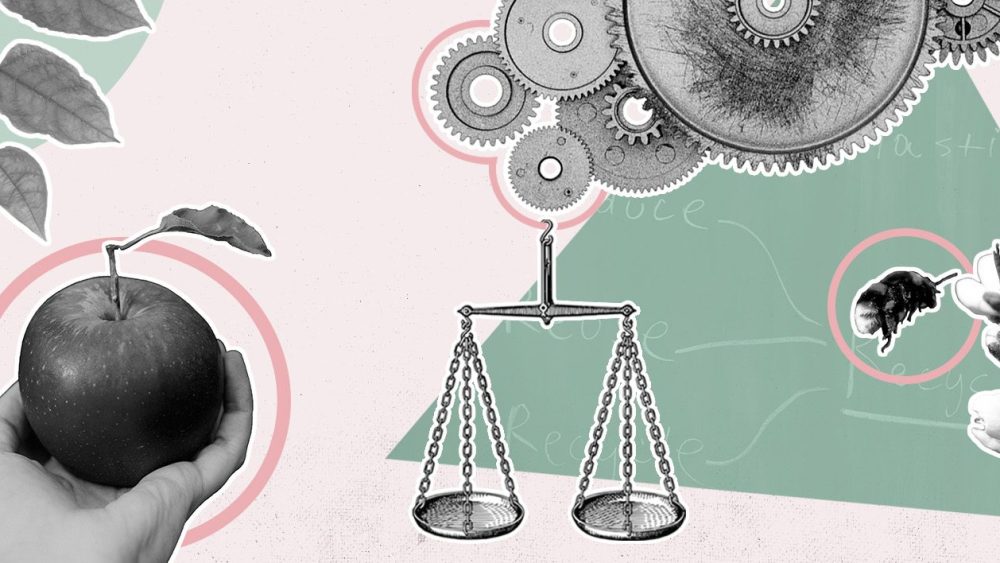Funded by LTH through the Green Transition initiative, Jonas Niklewski and Ivar Björnsson organized a course on “Teaching Sustainability for a Circular Built Environment”, which brought together 10 teachers from the Circular Building Sector profile area and educational developer Mirjam Glessmer. Over the last half year, the group met regularly and together worked on projects that will contribute at least eight courses in the LTH V-program directly – and hopefully many more indirectly.
Yesterday, at the course’s last meeting, many different, very practical, projects were presented, among others:
Changed criteria for what makes the best bridge model in the course VSMF05 Engineering Modelling: Analysis of Structures. While previously the goal of a practical bridge-building contest was to create a bridge that can hold the highest load, this year there was the additional requirement to do this using as little new material as possible! Student teams could “check out” timber building material (and return anything that wasn’t used), resulting in bridges that used approximately half of the materials as was used on average 2022-2024, while maintaining a similar failure load. Also, due to this new requirement while re-using old materials wasn’t limited, bridge designs became a lot more diverse and inventive than in previous years. This is a very interesting case to reflect on how external requirements shape design!
A study on how students are taught and introduced to the concept of Life-Cycle Analysis in the V-programme was carried out to know what can be assumed as prior knowledge and skills and built on in two courses in year 4 and 5 (VBEF50 CAD and BIM Applications in Construction & VBKN30 Timber Structures). This is based on questionnaires and interviews with teachers, which themselves resulted in many good conversations that already influenced another teacher to shape the framing in their course so it is easier for students to connect the content with other instruction later, and now will serve as a basis for what is taught in VBEF50 and VBKN30.
A closer cooperation between two different courses on concrete (VBKN05 Concrete Structures & VBMN10 Concrete in a Life-cycle Perspective), where mixtures with different climate footprints are developed and produced in one course (with the aim of testing beams cast using these mixture), and then those samples are assessed again in a later course (where focus is on assessing the materials durability and long-term performance).
Benchmarking: In a course which already contained multiple sustainability aspects (VBFN01 Sustainable Building Technology) benchmarking was done against a European best practice list of criteria for sustainable housing, and considerations on how circularity aspects can be highlighted further.
A roleplay in the course VBKF15 – Structural Engineering that will be run in May with the goal of engaging students in reflecting on and critically discussing the significant sustainability impacts that decisions taken by structural engineers and other built environment industry actors. The role plays focus on actual case studies and are intended to broaden student perspectives and highlight their role as sustainability leaders in their future careers.
Additionally, there were many ideas for how to continue working with sustainability and circularity in the whole V programme – for example with a portfolio that students add to throughout their studies.
The benefit to other courses will also come through the upcoming publication of project reports and their presentation at LTH’s Pedagogical Inspiration Conference (where we will also present more overarching take-aways from this course), as well as through the increased conversations between teachers.
Many of the course participants mentioned that they appreciated having a scheduled course to provide the space to talk about their teaching, being “forced” to read and discuss literature on teaching and learning, and how they enjoyed working collaboratively on improving their teaching. Now, after the end of this course, more teaching fikas are already in the planning – this time including also other interested colleagues!
Please let us know if you would like to be kept in the loop about presentations resulting from this project, and you are also very welcome to contact us if you would like to have a chat about what we learned and how that might be relevant for your teaching, or how you can make a course like this happen for you and your own colleagues*!
*another option is to join the next course on Teaching for Sustainability that will run at the Centre for Engineering Education this fall

